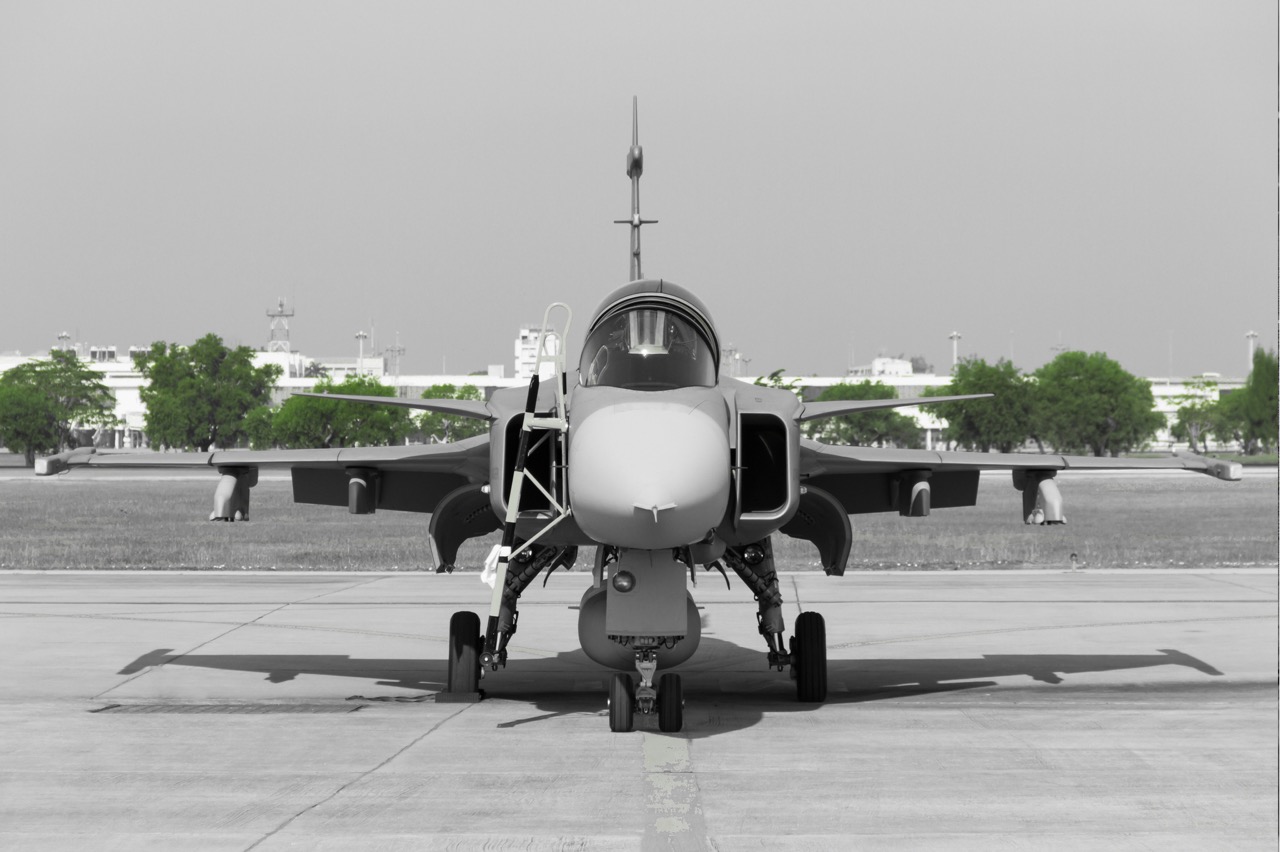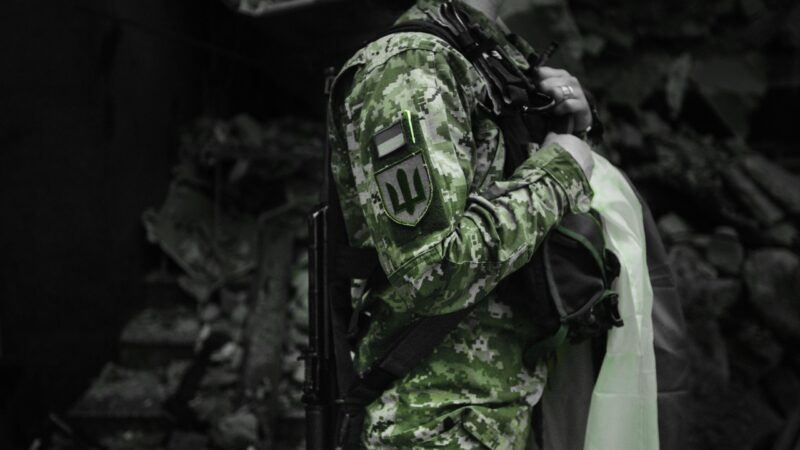Equipping Ukraine for the long haul: Some initial thoughts

Background
The focus of Western assistance so far during this phase of the Russo-Ukrainian war has been to deal with the acute problem of defending Ukraine and retaking its territory. Notably, the nature, scale, and effectiveness of equipment delivered has been constantly increasing. It is strange now to remember that there was a controversy even over the transfer of anti-tank missiles—or even helmets (in the case of Germany). Meanwhile, medium-range cruise missiles such as the UK’s Storm Shadow are today being provided and used.
The war is not going to end in 2023. It will go on to 2024 and likely beyond. Whenever this phase ends, the threat from Russia will persist. There is no doubt that Russia will rebuild its forces. Commensurately, the Kremlin’s ambitions to neutralize Ukraine and retain or retake Ukrainian territory will remain1. The challenge of building sustainable combat power in Europe in the next decade applies to all European powers. This is especially so since the United States will inevitably focus more on the “pacing challenge” of China. In other words, to put it bluntly, Europe will need to step up in order to defend itself as the US ramps down its direct and leading involvement on that continent. The US focus on China is likely to persist into the late 2020s and beyond. Indeed, there is a significant probability that there will be a major conflict in the Western Pacific during that period. For Ukraine, the implication is clear. First, it will need to sustainably rearm. Second, it will need to make a serious effort to integrate with European powers.
This essay will not deal with the complex questions concerning various combinations of security guarantees to Ukraine or paths to NATO membership. Whatever form NATO’s arrangements with Ukraine takes, the country will need to rearm in an affordable, sustainable, and above all effective manner. The purpose of this short paper is to outline some ideas as to how its armed forces should or could look in the medium and even longer term.
Hitherto, understandably Ukraine’s long-term defence needs have been largely ignored in the rush to provide immediate defensive equipment. It will take several years for decisions—whether on policy or procurement—to bear fruit in terms of ensuring the beleaguered country’s continuing military capability. Consequently, those decisions need to be made now.
This paper will briefly address three combat domains: land, sea and air; space and cyber domains give rise to a different set of problems. It should be recalled that equipment is not the same as capability. Capability is a function of many factors aside from equipment, especially training and support2. The focus here will be on equipment, as it takes longest to generate and will require the most intense discussion and debate. The paper will conclude with a brief discussion of one highly controversial possibility: the idea of Ukraine choosing to consider the option of developing nuclear weapons.
Rearming the Army
On land, notwithstanding the vast influx of Western weaponry, the great bulk of Ukrainian equipment remains ex-Soviet in design. In due course, as attrition takes its toll, this equipment will be “flushed out” of Ukraine’s arsenal. The current situation has given rise to an unsustainable and extremely difficult logistical challenge with multiple repair and supply chains3. Preparations must begin now to ensure that as time goes on, in order to reduce as far as possible the logistical burden, a very low number of variant types of equipment are supplied. This is as much the case with vehicles, such as basic transport, trucks, or all-terrain cars, as with higher-end materiél such as tanks or the equally essential armoured fighting vehicles (AFVs). The reality is, as hinted above in the assumptions, that cost of maintenance will be a factor in the relative suitability of all the different types of military equipment.
Let us deal first with the “flagship” element of the battlefield: tanks. The initial best option would be the Leopard 2 tank, which comes in several variations (A2–A7, as matters stand). On the face of it this would seem to offer the best option, with about 2,000 in service or storage in Europe alone. Hitherto, European nations and Canada (one of several non-European nations that make use of it) have shown themselves reluctant to part with significant numbers. Further, the issue of multiple variants in service only increases the logistical burden.
However, another option exists. There are over 2,000 extremely effective and fully combat-proven US-made M1A1/2 Abrams tanks in storage in the United States. These particular tanks are extremely expensive to maintain and run—rather more so than other Western tanks (all of them are complex, of course). Nevertheless, while it would take many months to make the stored tanks battle-worthy, maintaining this capability could be an enduring major US commitment to the Ukrainian army. It would also give Ukraine the option of common maintenance facilities with Poland, which has also purchased the Abrams4. Further, as to artillery, clearly now the vital arm of service, Ukrainian ground forces need a single reliable platform , while the United States has about 850 M109 self-propelled 155 mm guns in storage; these systems are unlikely to be used in any other context. The same applies to the US-made and also combat-proven Bradley AFVs, of which there are about 2,000 in storage. Taken together these vehicles would provide a very sound and more than adequate basis for an effective combined arms ground force—which, if well-supplied with artillery, would be modern and enduring enough to challenge and defeat Russia well into the 2030s. Over a period of 2–3 years, adequate supply of these weapons systems could be accomplished in whatever numbers are required. The advantage of the US-centred approach is that it would give Ukraine a tank, AFV, and artillery combination from a common source and equipment with which Ukrainian troops will have some familiarity.
Moving across to the key issue of long-range rocket artillery (Multi-Launcher Artillery Rocket Systems—MLRS), it will take several years for the orders of new missile systems such as HIMARs to come into service, but there may be an interim solution just to the West. Poland is soon to receive HIMARS and Korean Chunmoo MLRS. One option may be developed for the Polish lend-lease of some of these systems. Clearly such a decision would present something of a risk for the government in Warsaw; however, these investments are designed to act as deterrents against Russia, and their use by Ukraine would only act to supplement that objective.
Rebuilding the Air Force
Prior to the announcement of the removal of the US’s objection to supplying F-16s, there was much debate as to whether they were the right aircraft to meet the country’s requirements. Whatever the decision of history is in that respect, one thing is certain—they are a significant improvement on what Ukraine has hitherto deployed. Depending on the way in which Ukrainians deploy the aircraft and their success in doing so (it is unlikely that we will see any significant effect before the spring of 2024), a long-term solution to Ukraine’s future air power needs will need to be determined.
It may well be that their experience of the F-16 will make the decision a simple one. In terms of numbers, a wing (48 aircraft) of late-model F-16s (F-16 C/D) might be appropriate. However, another—or indeed, depending upon the resources available, a supplementary—long-term option might be the excellent Swedish Gripen, about 30 of which will be available by 2027. Many air power experts consider these to be ideal for Ukraine, as they are built for rough airfields and for so-called dispersed operations, which means taking off and landing on highways. Further, they are specifically designed for combat against Russian forces.
Whichever aircraft forms the basis of Ukrainian air power into the future, none of them will be of any use without effective weapons to fire. The best options here are probably the AMRAAM air-to-air missile (common to the NASAMS anti-aircraft system) or the Spear air-to-ground missile. A reasonable number of well-armed such jets (30–50 F-16s and/or Gripens) could provide an affordable yet valuable contribution to Ukraine’s arsenal. This would need to be supplemented by a modernization of the adequate and well-organized radar system that is already being deployed and used. Integrating this system into NATO’s wider defence network will be vital.
Increasing maritime power
While less well-reported than the ground or air campaign, the maritime element of the war is essential to the state’s survival as a viable economic concern. Ukraine will continue to develop capabilities to challenge Russian naval power on the surface or under the surface. Russia’s submarines present a particular threat in this regard. However, nothing at or near the sea provides a better deterrent capability to submarines than submarines.
Of all the categories of equipment so far mentioned, this would be by far the most expensive. Ukraine will not be able to afford to buy submarines of adequate quality, along with the supporting infrastructure, including training. However, with some innovative thinking NATO and the West could provide such a capability.
For example, Sweden is due to decommission two of its old but still highly effective Gotland Class submarines. A plan for them to be purchased by Poland appears now to have been shelved. Indeed, Poland is now tendering for a new submarine. Might it be feasible for Poland or another NATO state (preferably a Black Sea littoral state—Romania?) to acquire second-hand submarines and share them with Ukraine? These need not be necessarily Swedish; many other capable submarines will become available globally and could be loaned and jointly crewed with Ukrainian naval personnel. Poland could share its planned new submarines in this way as well; it is possible. Such an arrangement is in place vis-à-vis Australia and the UK. Legal complications may arise with respect to deployment considering the Montreux Convention, but they are by no means insurmountable. Submarine capability such as this would be a significant deterrent against Russian aggression, offering a real possibility of Russia losing control of the Black Sea.
Aside from manned submersibles, options are rapidly being developed around the world for unmanned submarines to work alongside conventional boats. One option that might be suitable for Ukraine in this regard might be the autonomous “Cetus” submarines currently being developed and soon to be deployed by the British Royal Navy. These are envisaged as primarily surveillance platforms. They are relatively cheap, at about £15.7m each. Of course, we have seen Ukraine deploy maritime drones in assaults on Russian bases in Crimea, and the Ukrainian navy will have their own ideas about how to proceed in the development of maritime drone technology.
On the surface and rather more conventionally, a flotilla of well-armed patrol boats will be an essential component of the future navy of Ukraine, alongside its minesweeping and clearance capability, which would involve surface and subsurface crewed and uncrewed vessels.
The emerging question of nuclear weapons
As discussions concerning the possibility of NATO membership intensify, there are signs of an emerging discourse in Ukraine (and elsewhere) as to the possibility of Ukraine re-acquiring nuclear weapons capability. This has not yet emerged into the mainstream, and it may not do so. Whether it does or not will largely depend upon the nature and reliability of security guarantees that Ukraine will or may receive from its allies. Advocates take the view that nuclear weapons represent the ultimate guarantee.
Ukraine possessed nuclear weapons inherited from the former Soviet Union for four years. The state disarmed in 1994 in exchange for security guarantees in the form of the “Budapest Memoranda on security assurances,” signed by the three nuclear weapons states and guarantor nations of the US, UK, and Russia.
In view of the events since 2014, Ukraine has reason to doubt such assurances. Nuclear weapons are the ultimate assurance, provided that the concept of deterrence works. There is little doubt that Ukraine has the technical knowhow to achieve this. However, the dangers are very clear. There would seem to be equally little doubt that Russia would have, to put it mildly, severe objections to such an approach. These are likely to take the same form as Israels’s objections to Iran’s alleged nuclear programme. Consequently, the development of a nuclear weapons capability by Ukraine would need to be secret and—like Israel—if not deniable, then never commented upon. In the case of Israel, but not in the case of Ukraine as matters stand, there are delivery systems (missiles and aircraft) that can be relied upon.
Conclusion
Apropos Israel, one potential model for Ukraine’s future defensive posture is that Middle Eastern state—particularly inasmuch as it is strongly supported by the US, both financially and technically, and with a strong security guarantee dating formally from 1963. Clearly there are major differences in the two cases, not least the deep history that the US has vis-à-vis Israel. However, the effective result may be similar, provided Ukraine can sustain its democracy: a very well-armed and militarily capable state relying to a greater or lesser extent on outside assistance.
Time will tell whether this will be an appropriate model. Whatever the shape of Ukraine’s relationship to Europe, the United States, and NATO more widely, it is very clear that the country will remain a bulwark of European defence against Russia. This imposes a duty upon Western states, the discharge of which will be essential to European security. This will cost a very great deal of money. However, as with any good investment, the return will vastly outweigh the outlay.
1 “NATO’s generals reckon that Russia could rebuild its land forces in 3–5 years. Ultimately, conditions would be ripe for Putin or his successor to have another go” (The Economist, 25 February 2023, p. 17).
2 Capability is the product of equipment, personnel, training, and support, among other factors. Ukraine’s integration of NATO doctrine and practices is beginning at an informal level, with extensive training programs taking place throughout Europe and the United States. Serious consideration should be given to establishing a cross-fertilizing theoretical and field training centre of excellence, with the goal of capturing and integrating real-time lessons from the current war.
3 For example, there are at least twelve foreign artillery systems in Ukrainian service, each with a different supply chain and many with different types of shells and charge bags. There is an equal number of ex-Soviet types.
4 https://www.google.com/url?q=https://www.defensenews.com/global/europe/2023/01/04/polandsigns-dealtobuy2ndbatchofusabramstanks/&sa=D&source=docs&ust=1686999016847051&usg=AOvVaw3UFBcfsg1QxiUXMeD63bxj
5 The daily UK Defence Intelligence review reported on 5 June 2023 that depleting Ukraine’s supply of anti-aircraft missiles is the main objective of Russia’s spring missile onslaught on Kyiv and other parts of the country. See https://twitter.com/DefenceHQ/status/1665595205309833219.





